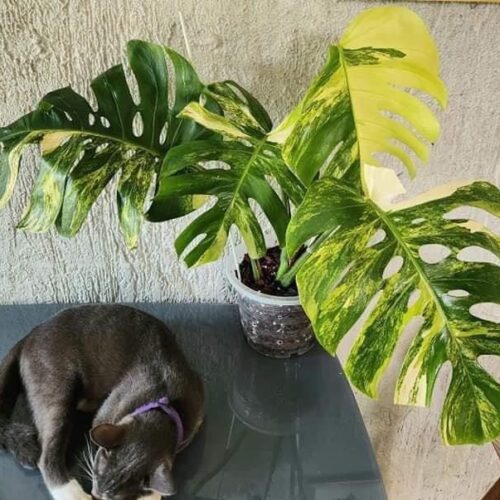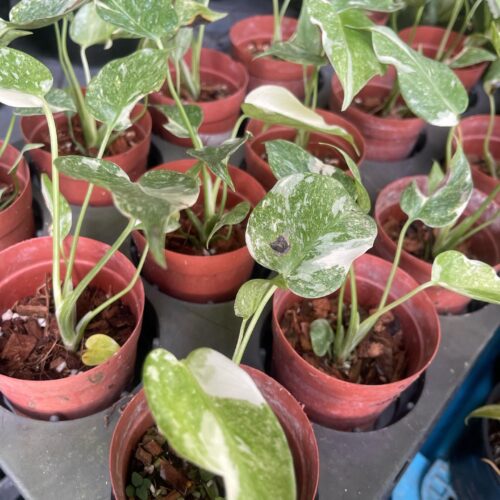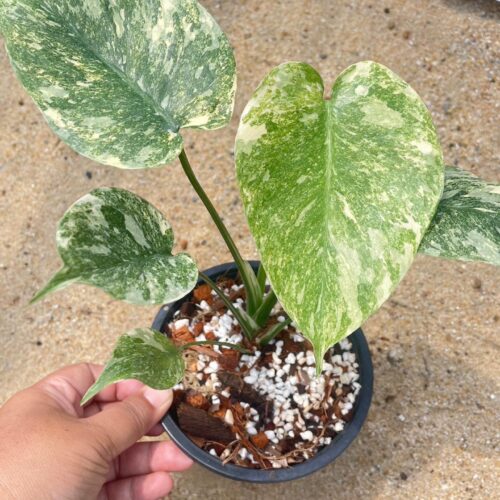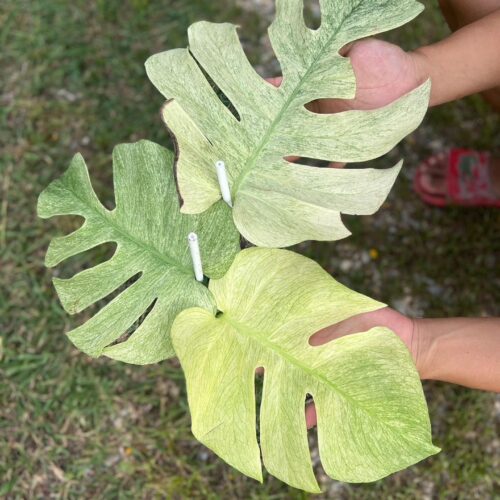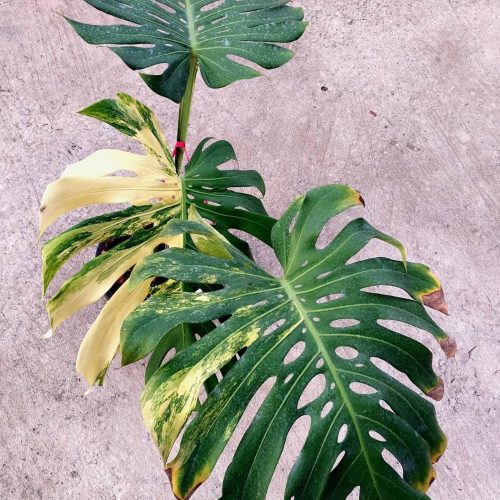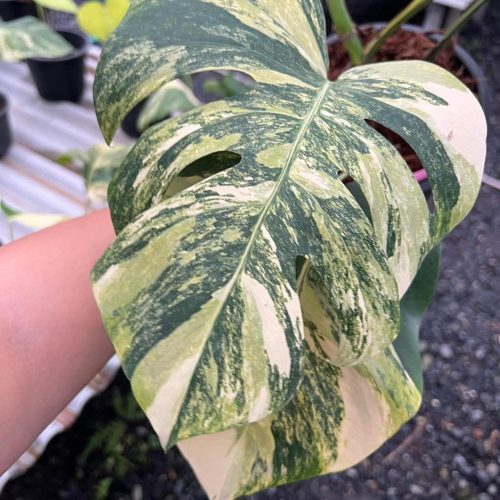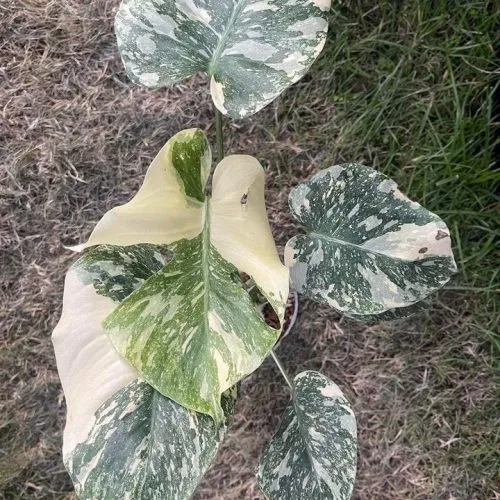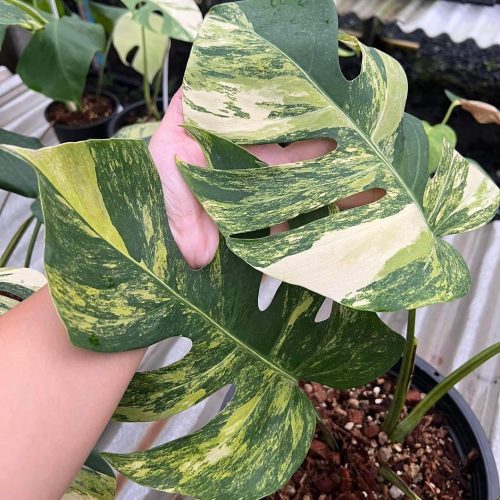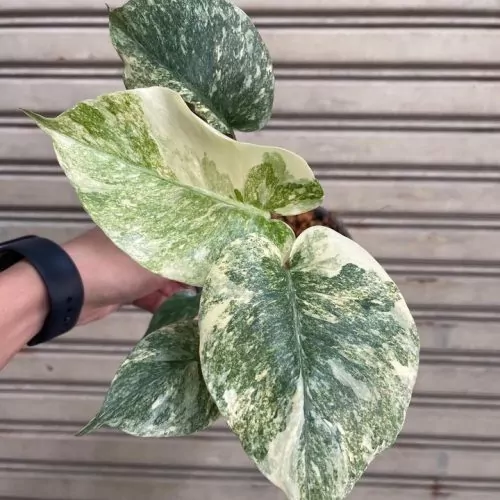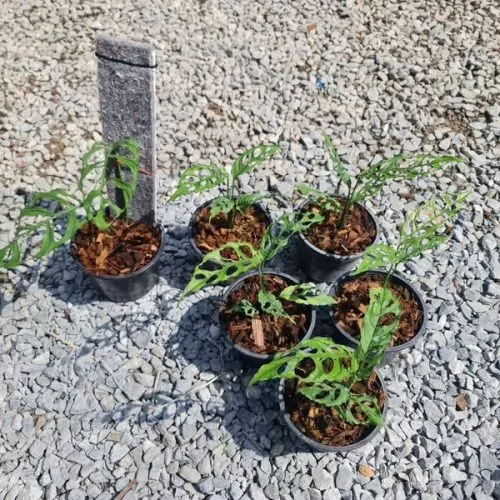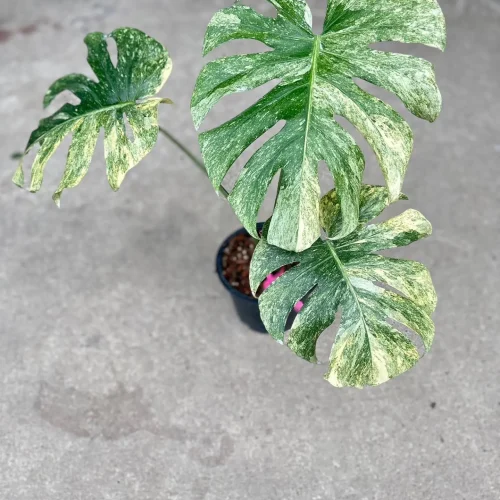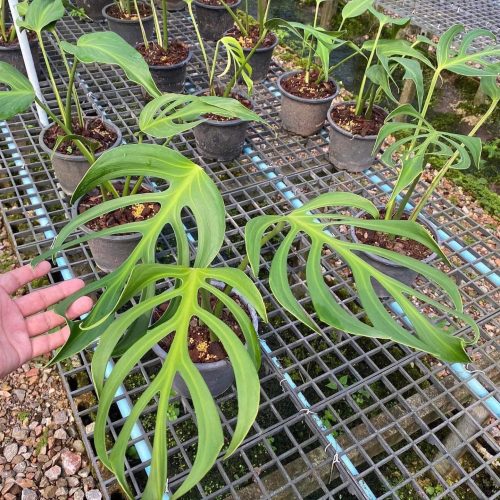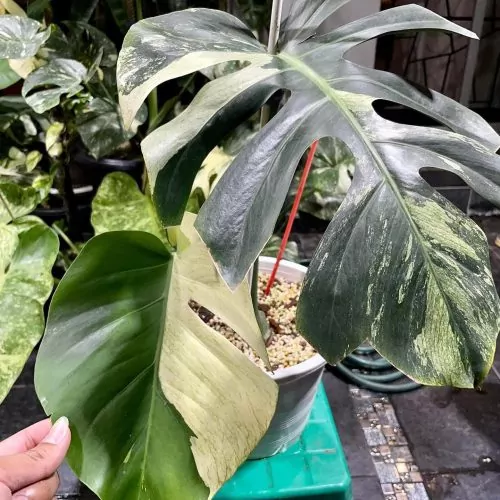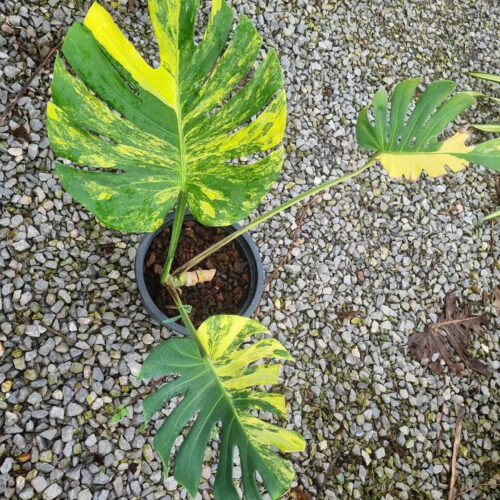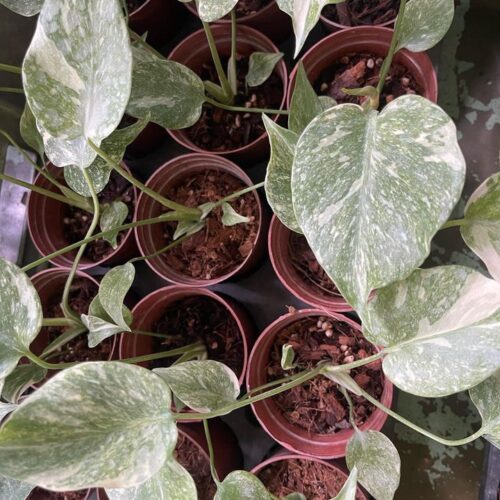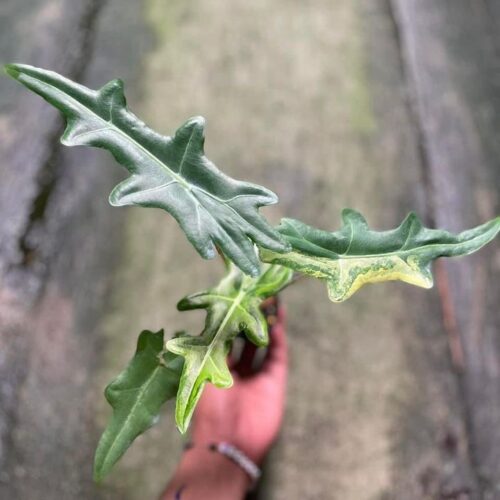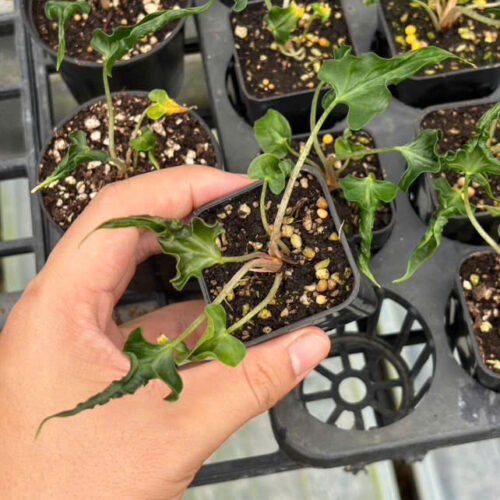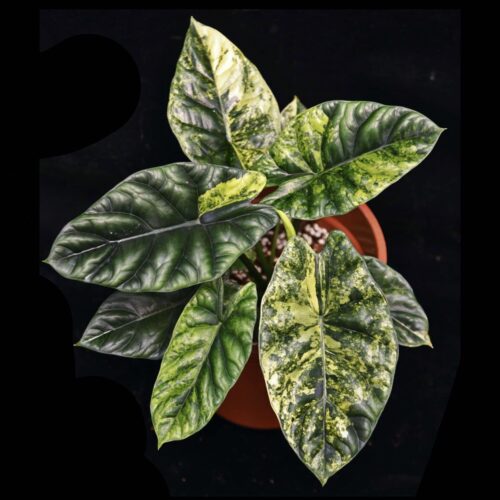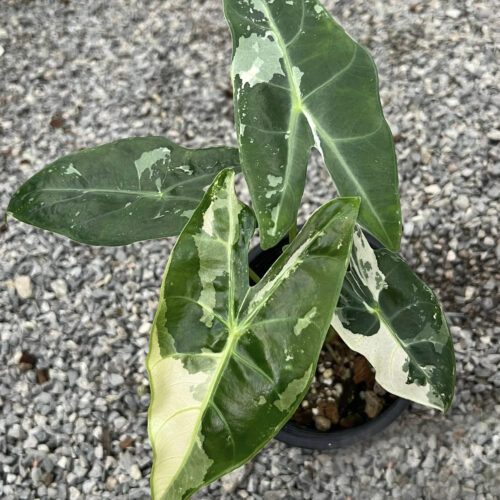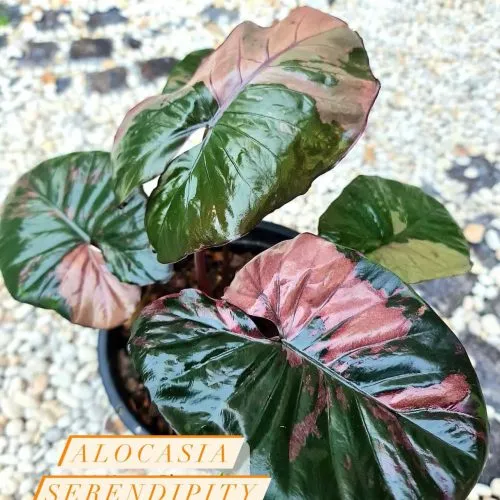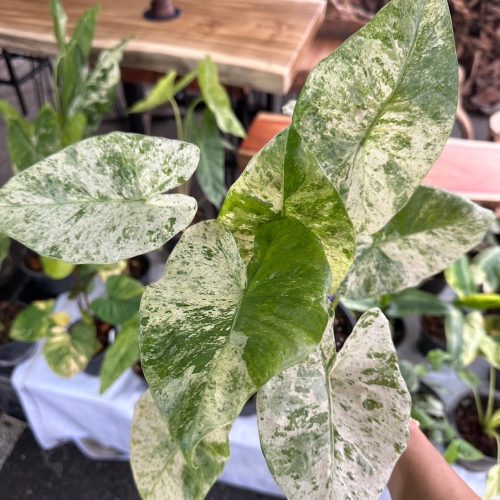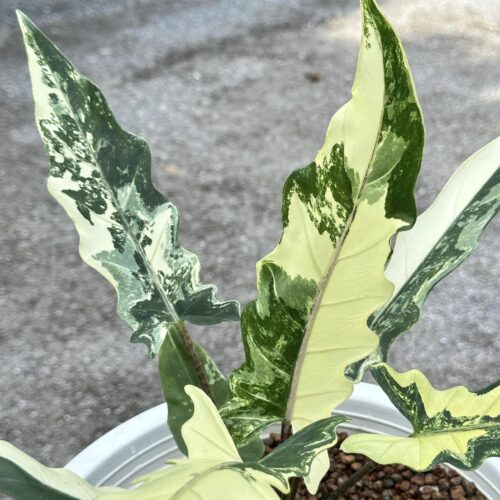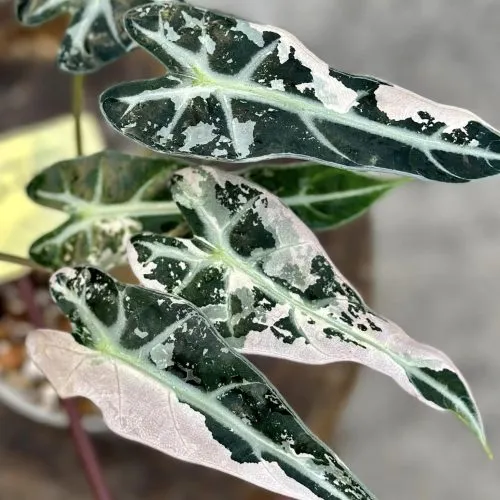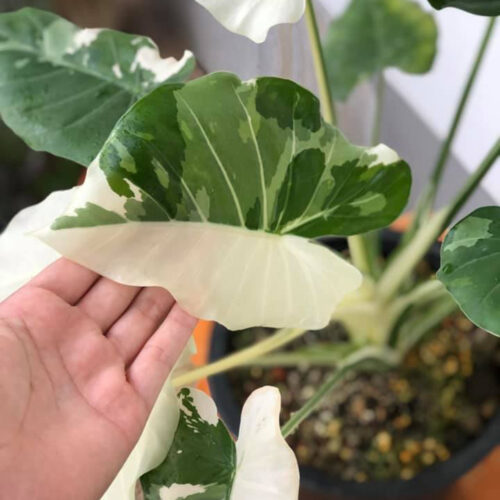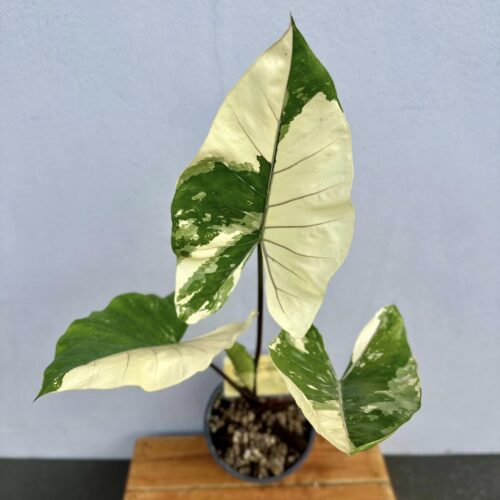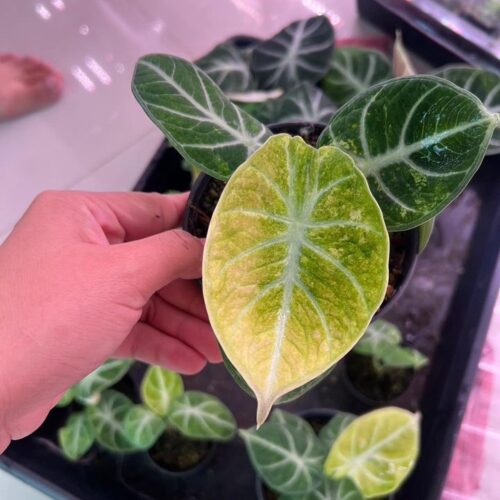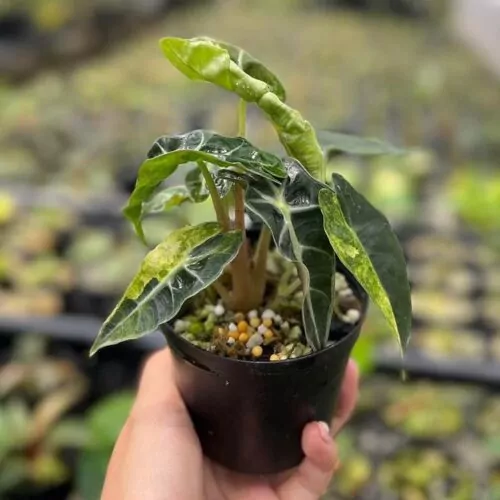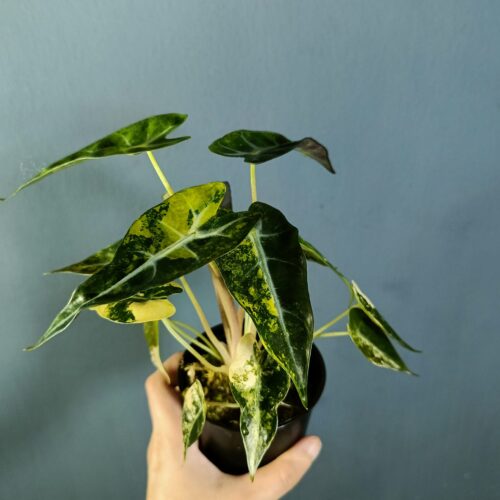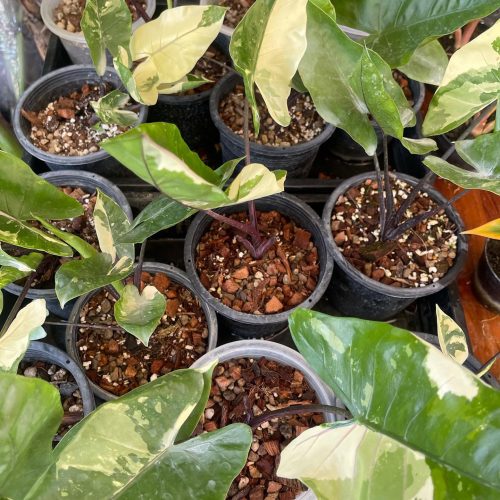The Alocasia Scalprum, also known as the Scalpel Plant, is an exotic and striking addition to any indoor garden. Its unique leaf shape and vibrant color make it a favorite among plant enthusiasts. This comprehensive guide will provide you with all the information you need to grow and care for the Alocasia Scalprum successfully.
Introduction
The Alocasia Scalprum is a member of the aroid plant family, which includes popular varieties like Philodendron, Monstera, and Anthurium. Native to the tropical regions of Southeast Asia, this plant is prized for its unique, elongated leaves that resemble a scalpel. Similar to Aglaonema and Epipremnum, the Alocasia Scalprum is not only beautiful but also relatively easy to care for.

Ideal Growing Conditions for Alocasia Scalprum
Alocasia scalprum thrives in warm, humid environments with the following care:
Light
- Bright, indirect light is best
- Some early morning or late afternoon sun is okay
- Low light will cause weak growth
Temperature
- Prefers consistent temperatures between 65-80°F
- Avoid drastic temperature drops
Humidity
- Likes 40-60% ambient humidity
- Use a humidifier or pebble tray to increase moisture
Water
- Allow soil to partially dry out between waterings
- Water thoroughly until it drains from holes
- Mist leaves occasionally
With the right conditions, Alocasia scalprum will produce lush green foliage and impressive leaves. Monitor conditions closely and make adjustments as needed.
For more insights into the preferred environments of Alocasia varieties, see “5 Must-Know Tips for Growing Alocasia.”
Soil Needs for Optimal Growth
Choosing the proper potting mix is key to growing healthy Alocasia scalprum plants.
Soil Ingredients
- High-quality potting soil for aroids
- Perlite, bark, or leca for drainage
- Some sphagnum moss to retain moisture
Soil Preparation
- Use a pot with drainage holes
- Mix in perlite at a 3:1 soil to perlite ratio
- Test drainage by watering the mix
Well-draining, nutrient-rich soil will feed roots while preventing sogginess. Re-pot every 2 years using fresh potting mix for best results.
Discover the variety of soils suitable for different Alocasia types in “5 Must-Know Secrets of Alocasia Plants.”
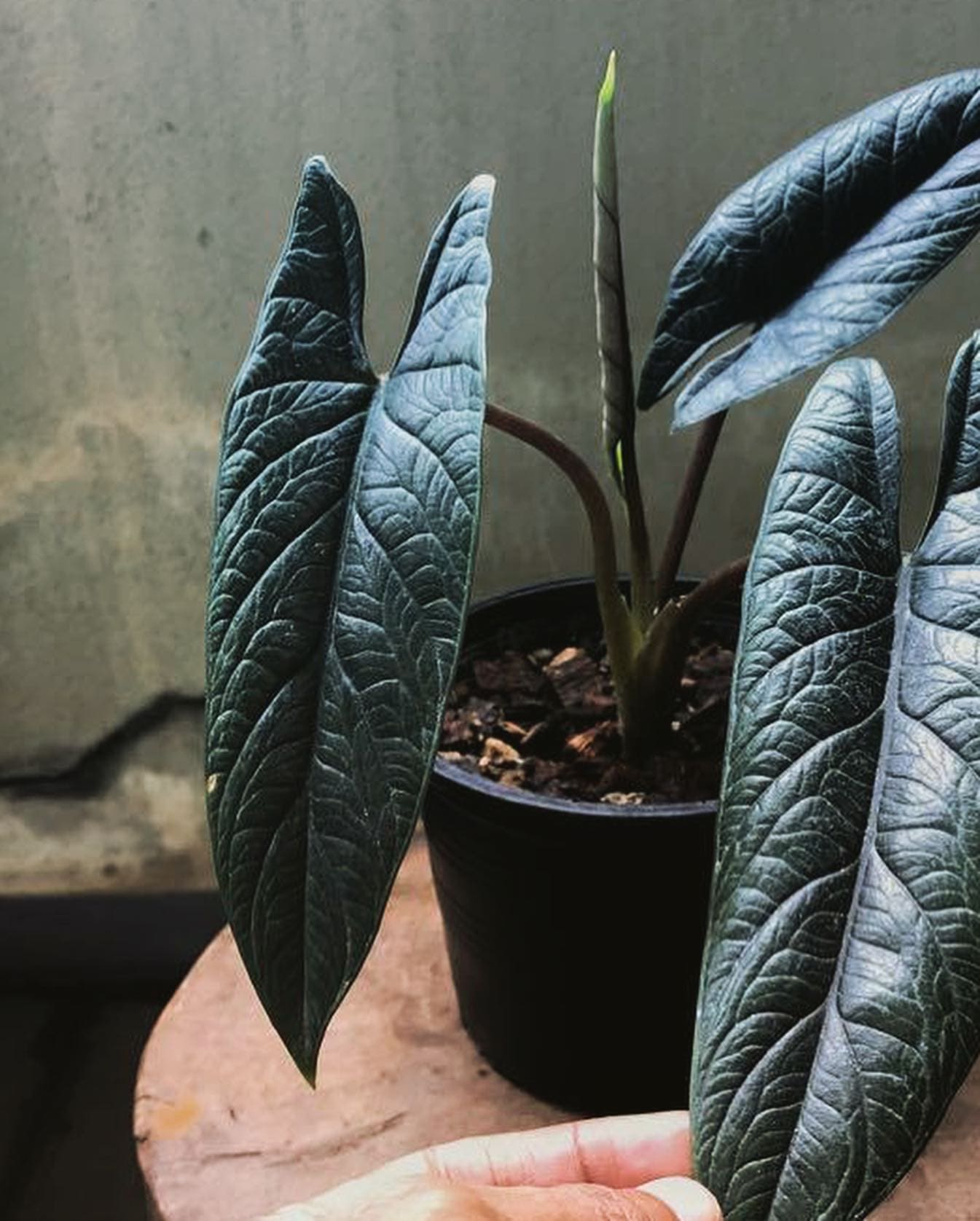
“Discover the unique beauty of Alocasia scalprum! Click now to bring this exotic plant into your home and elevate your space with its stunning foliage. Shop today!”
Alocasia species are the most sought after by aroid plant lovers
Propagating Alocasia Scalprum
Propagating Alocasia scalprum allows you to expand your plant collection. There are a few methods to try:
Division
- Carefully divide the rhizome using a sterile knife
- Ensure each division has roots and leaves present
- Plant divisions in small pots using well-draining soil
Seed
- Allow the plant to flower and go to seed
- Collect and immediately sow the ripe seeds
- Cover lightly with soil and keep warm and humid
Be patient as new plants will emerge slowly at first. In time, though, you’ll have multiplied your precious Alocasia scalprum specimens.
Learn about other methods of propagation in Alocasias by exploring “5 Steps to Propagate Alocasias.”
Common Issues with Alocasia Scalprum
While these tropical plants are stunning, they can sometimes struggle. Watch for these common problems:
Drooping Leaves
This is usually from inconsistent watering. Stick to a thorough watering schedule and ensure the plant gets humidity.
Brown Leaf Tips
Low humidity is often the culprit here. Increase humidity through misting, pebble trays, or a humidifier.
Yellowing Older Leaves
This can indicate overwatering or soggy soil. Allow the soil to dry somewhat between waterings.
By understanding Alocasia scalprum’s needs and potential issues, you can keep problems minimal and help the plant thrive.
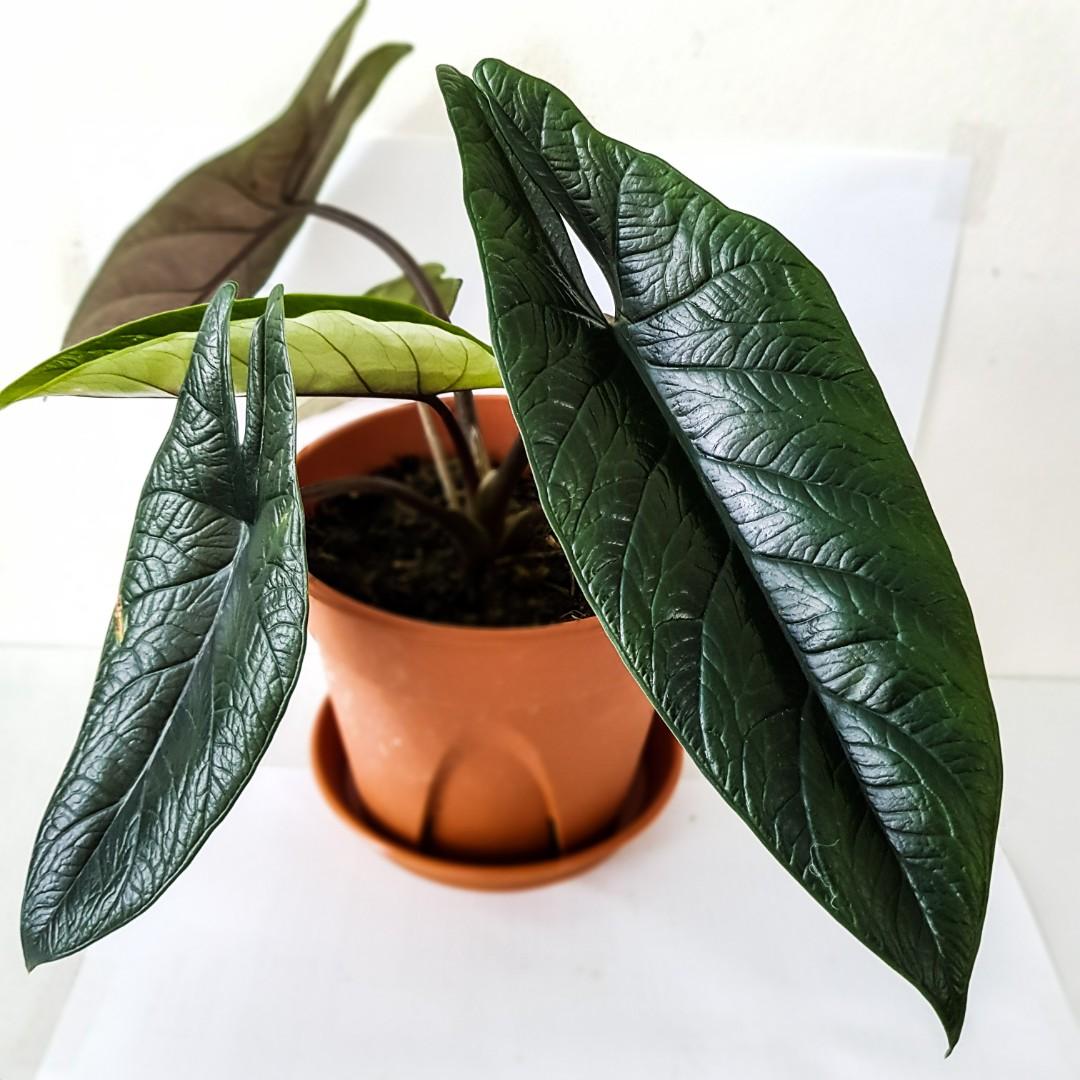
The Reward of Growing this Unique Plant
Caring for Alocasia scalprum does require some effort, but the payoff is worth it. As you tend to its specific needs for warm temperatures, high humidity, and the right potting mix you’ll have the pleasure of watching this exceptionally rare plant grow.
The lush green and velvety leaves will add outstanding texture and visual appeal to any indoor garden. Its arrowhead shape and striking venation simply can’t be matched. When Alocasia scalprum is happy, it will produce delicately hooded new leaves that unroll like works of natural art.
For the houseplant collector who enjoys unusual specimens, Alocasia scalprum is a must-have addition. Follow this care guide to successfully grow this tropical beauty in your own home and enjoy its exotic good looks for years to come. The effort provides the reward of owning an exceptionally rare and coveted alocasia variety that is like no other plant.
Conclusion
With high humidity, warm temperatures, bright indirect light, and well-draining but moisture-retentive soil, Alocasia scalprum can thrive indoors. This stunning plant with delicately hooded leaves is highly sought-after by houseplant collectors. Follow the growing, care, and propagation tips outlined here to help this rare tropical specimen stay healthy and show off its one-of-a-kind foliage and form. Alocasia scalprum is a unique addition to any plant collection.
Frequently Asked Questions
- Is Alocasia scalprum toxic? Yes, it’s toxic if ingested, so it’s important to keep it out of reach of children and pets.
- How often should I water my Alocasia scalprum? The watering frequency depends on the environment, but generally, you should wait until the top inch of the soil is dry before watering.
- Can Alocasia scalprum tolerate low light? While it can tolerate some shade, it prefers bright, indirect light for optimal growth.
- What should I do if my Alocasia scalprum has yellow leaves? Yellow leaves can indicate overwatering or lack of nutrients. Check the watering routine and consider using a balanced fertilizer.
- Is Alocasia scalprum an indoor or outdoor plant? It can be both. However, it’s more commonly grown indoors due to its specific temperature and light requirements.


